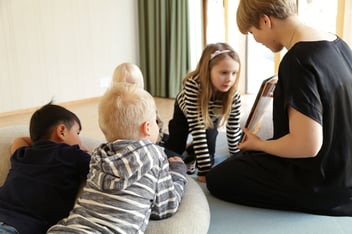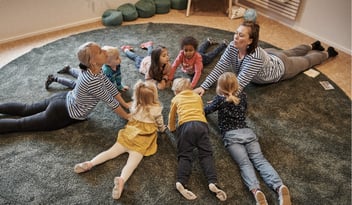Defining Special Needs & Inclusion in Early Childhood Education
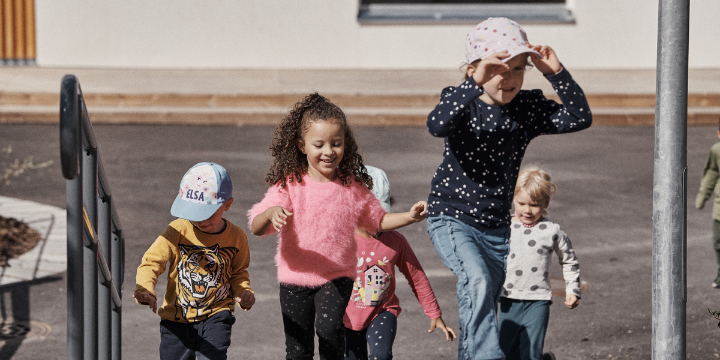
Special needs and inclusion are two important concepts to know and understand when it comes to early childhood education. After prolonged school closures and distance learning, it’s more important than ever that all children have the same possibilities to learn and receive the support they need. The youngest members of society especially will need extra help as they experience the socialization and in-person education that they missed during lockdowns. In this article, we will discuss what special needs and inclusion encompass and how we as educators can support differently abled learners.
Defining Special Needs in Early Childhood Education
Special needs cover a variety of differences in early childhood education. When discussing special needs, it is important to remember that they are culturally and socially constructed phenomena. This means that the child themself is not special, but the ‘special’ aspect is constructed in relation to the environment and culture the child is in. The barriers that children with special needs face may or may not cause limitations and disability depending on how educators approach their needs.
There are three board categories of special needs. They are:
- Physical and sensory impairment needs: This can include limb disabilities, blindness or visual impairments, deafness or hearing impairment and epilepsy
- Neurodevelopmental needs: Learning disabilities, ADHD, autism and down syndrome fall under this category.
- Social-emotional/behavioral needs: This encompasses behavioral and emotional challenges caused by trauma, poor living conditions or neglect/abuse.
However, the different conditions listed above are often interconnected, which is why it is important to take a holistic approach to supporting children with special educational needs. In this article, we focus on the second and third categories. As early educators, our goal is to meet children where they are and provide the support they need to succeed. When it comes to diagnosing disorders, it’s critical to bring in professionals.
Neurodevelopmental needs
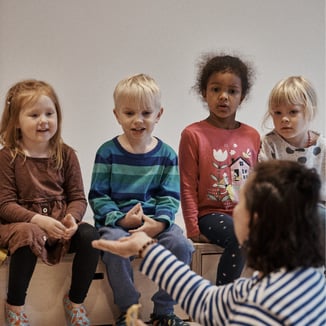
This category of special needs relates to cognitive functions. Learning disabilities fall under this umbrella, and they include a wide range of learning-related differences. Children with such disabilities can have problems with reading and writing skills (typically dyslexia), mathematics, listening, speaking, visual perception and motor skills. These challenges need to be constant and severe in order to be classified as a disorder. Most are diagnosed in the primary school years, but early signs may already appear in early childhood.
Other examples of neurodevelopmental needs are ADHD, or Attention Deficit Hyperactivity Disorder and ADD, or Attention Deficit Disorder. Both often appear in children before the age of seven and can lead to an inability to stop spontaneous responses like lots of movement. They manifest in a variety of ways. For example, a child with ADHD can be hyperactive and impulsive while still paying attention, while a child with ADD can appear inattentive without being hyperactive or impulsive.
Children with these disorder might also struggle to stay focused, get easily distracted, act without thinking, talk excessively, or interrupt other children. A child’s ADHD or ADD does not relate to their intelligence and talent. It might affect their learning when they are excluded from certain activities, but children with this disorder are typically creative, flexible, enthusiastic and energetic.
Because of these differences, it’s important to give special support to children with such a disorder. Some helpful pedagogical practices include visual aids, short and clear instructions, time and support during transitions and good behavior modeling. “Stress toys" like weighted or balancing pillows can help calm a child’s physical movement during situations where they need to be still for a while and concentrate too. Limiting visual and audio distractions also helps, and this is emphasized in the HEI design. In addition, it’s important to adapt challenges to an achievable level for a child with ADHD or ADD. Most of all, one should concentrate on giving feedback in situations where children do behave well.
Socio-emotional and behavioral needs
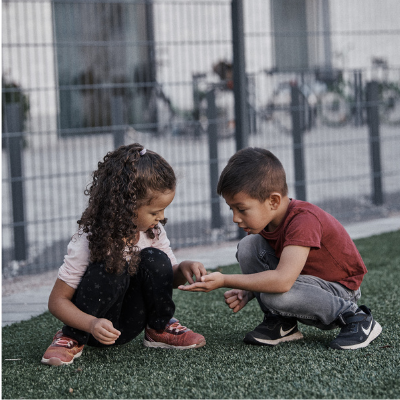
Children who struggle to develop socio-emotional competences may have special needs, and the type of support they require can vary greatly. In early childhood, children’s typical social development include:
- Developing self-knowledge and self-awareness - capability to recognize own emotions and personal goals as separate from and evaluate one’s own behavior
- Developing self-regulation - ability to regulate own emotions and behavior
- Developing social awareness - ability to recognise and understand others’ emotions and perspectives, show empathy and compassion and understand social norms
- Developing human relations - ability to create and maintain healthy, balanced and rewarding social relationships others
- Developing responsible decision-making - ability to make decisions that promote one’s own positive behavior and interaction towards others
When children have challenges within these areas, it can be difficult to manage and support them because such problems are complex. They could originate from biological, social and/or environmental factors. While all children sometimes struggle in various social-emotional situations as they grow up, those with long-lasting issues require special attention. Some examples of these issues include:
- Inability to follow daily routines (e.g. eating, sleeping, toileting)
- Experiencing difficulties in attachment to caregivers
- Displaying emotional expressions that are out of the ordinary or as apathy and not displaying emotions at all
- Inability to respond to others’ emotions
- Exhibiting frequent emotional outbursts and experiencing difficulty in calming down
- Frequently refusing to try new things or demonstrating low self-esteem
- Having difficulties in social interactions (does not know how to join in or stay in play with peers/adult, constant unwillingness to express oneself and one’s thoughts in any situation or environment)
- Not expressing any interests
- Showing excessively aggressive or withdrawn behavior
- Frequently exhibiting behaviors that are problematic, persistent or dangerous (e.g. attempts or threats to harm oneself or others)
When these problems arise, it is important to bring in professionals to diagnose and support the child in question.
Defining Inclusion in Early Childhood Education
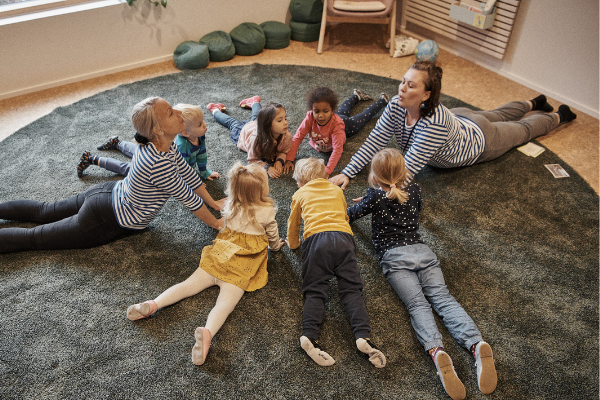
In Finland, the term ‘special needs’ is not found anywhere in official legislation. It was phased out in recent years because the educational system emphasizes inclusion above all else. In practice, inclusion in early childhood education means providing for each individual in the early education setting so that all children can participate. According to the United Nations’ Convention on the Rights of the Child, all children should be brought up in the spirit of peace, dignity, tolerance, freedom, equality and solidarity. Therefore, children with special needs should also enjoy the human rights and freedoms granted to other children.
When talking about inclusion and inclusive practices, we actually talk about access, participation and support.
Access can refer to the following phenomena:
- Physical access to different learning environments
- Access to different services (do services exist and are they available when needed)
- Access in a sense that the society allows and provides opportunities
- Access in a sense of financial means
Participation can refer to the following phenomena:
- Allowing everyone, including children, to participate in decision-making processes
- Acknowledging that children need to be actively provided with opportunities to participate
- Early intervention programs to help the children who need help
Support can refer to the following phenomena:
- Physical solutions in learning environments, materials and equipment
- Resource in personnel (teachers, assistants, professionals)
- Providing in-service training for the personnel to encounter diversity in classroom
What inclusion can be in practice:
- All children are educated in the same learning centers or schools.
- The support is provided to children in their immediate environments instead of taking a child to see different specialists elsewhere.
- All children have opportunities and support from teachers in order to positively interact with their peers.
- Every child is accepted as they are: we are not changing the child, we are changing the way we work and adapting our learning environments in order to support their growth and learning.
Inclusive practices are closely related to a child-oriented pedagogical approach. Traditional early childhood education and pedagogical implementation have been directed by developmental theories and stages. Nowadays, the understanding of young children’s learning processes is wider and takes the social and interactive aspects into consideration as well. A child’s learning is regarded as an active process in which new skills and knowledge is built on top of and connected to previous learnings and experiences. Learning happens in interaction with surroundings and children are regarded as active agents and the power and opportunities for decision-making that comes to learning is more divided between adults and children.
Embracing diversity and minimizing stigma associated with difference is also an important part of inclusion in early childhood settings. This means that as early educators, we set the example in how we treat children with special needs. If we take these differences into account and adapt our teaching methods to educate all children, regardless of their needs, we promote an inclusive environment for everyone.
Learn more about the HEI Schools curriculum and how it fosters inclusion!



